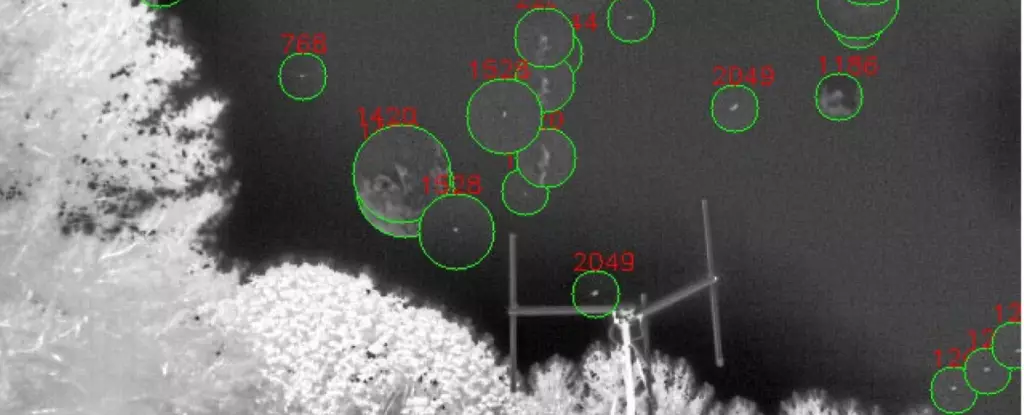In a world where information is increasingly available, the persistence of classification on unidentified aerial phenomena (UAP) can be frustrating. The declassification of certain reports by the Office of the Director of National Intelligence in 2021, followed by the Department of Defense’s ongoing disclosures, has sparked public intrigue. Nevertheless, the broader scientific community and inquisitive citizens alike find a conspicuous lack of publicly accessible scientific data on these mysterious aerial objects. This chasm in information creates skepticism and curiosity, leaving many to wonder about what lies beyond our atmosphere.
The emergence of research initiatives, such as the study led by the Harvard-Smithsonian Center for Astrophysics and the Galileo Project, indicates a beacon of hope. By introducing innovative tools and methodologies for UAP detection, researchers aim to push the boundaries of our understanding of potential extraterrestrial spacecraft, signaling a shift toward transparency and scientific rigor.
Pioneering New Technologies: The Dalek Initiative
A significant stride in the search for alien technology comes from the introduction of a new instrument, humorously dubbed “Dalek” after the infamous adversaries from the *Doctor Who* series. Spearheaded by Laura Domine and a group of interdisciplinary experts, this cutting-edge device employs an All-Sky Infrared Camera designed to unveil potential signs of non-terrestrial vehicles. Presenting their findings at the 2025 Lunar and Planetary Science Conference, the team reflects a blend of enthusiasm and scientific precision.
Echoing findings by NASA, which stressed the importance of customized sensors for UAP detection, the Dalek initiative aims to operate on millisecond timescales. This rapid responsiveness is crucial for the perceptive capture of data from fleeting anomalies. In a climate where UAP reports often go unverified, this proactive approach could offer the necessary means to enhance detection and facilitate a more thorough understanding of these phenomena.
Innovative Data Collection and Analysis
The ambitious design of the Dalek instrument is not merely about detection; it extends to record-keeping attributes that encompass an object’s shape, color spectrum, and even sound. With a multimodal and multispectral observational system in place, researchers are on track to compile an extensive database of potential celestial artifacts. This sophisticated technology promises to paint a more comprehensive picture of UAP events, where past investigations often relied on scattered, classified data.
Guided by the expertise of Professor Avi Loeb, the Galileo Project is already making significant headway in its mission. With three observatories currently operating, the team has already analyzed close to one million objects, employing machine-learning software to sift through the plethora of data. This data is not just numbers on a screen; it’s a meticulous catalog built to illuminate the nature of unidentified aerial phenomena.
Machine learning plays an invaluable role in distinguishing between known objects, such as aircraft and balloons, and those that defy classification. As the project evolves, the hope is to refine data collection methods further by enabling triangulation of objects’ distances, which will be pivotal in assessing their movement patterns and distinguishing between man-made and potentially alien technology.
The Challenge of Ambiguity
Despite the advances represented by projects like Dalek, the challenge of ambiguity remains. The preliminary five months of data analysis revealed that a significant portion of detected trajectories—around 16%—contained outliers that warranted additional scrutiny. While concerns persist about what lies behind classified government data, the Galileo Project is committed to clarity and transparency. By crossing the threshold from speculation to systematic observation, this research endeavors to encounter the hard evidence of extraterrestrial life or technology.
Comparison with government studies further illustrates this dilemma. The AARO has reported that only about 3% of cases are classified as ambiguous. Though this perspective seems promising, it’s worth contemplating the difference between governmental access and the potential offered by open scientific inquiry. Hence, the Galileo Project’s structure represents a refreshing alternative, wherein the sky remains unclassified, and any object that moves through it has the opportunity to be studied without the constraints of secrecy.
Big Discoveries Await
Professor Loeb articulates a compelling vision for the future of the project. The end goal is audacious: to identify anomalous physical characteristics that could indicate technologically advanced civilizations. While the odds of encountering a profound discovery may feel daunting—about one in a million—the pursuit represents the spirit of scientific exploration. In an era where humanity grapples with existential questions, these ongoing efforts may forge pathways into realms previously thought impossible.
The collective endeavor to unearth evidence of life beyond Earth is not merely a scientific challenge; it’s a fundamental inquiry into our existence. As the Dalek initiative and other similar projects continue to gather momentum, one cannot help but feel a blend of excitement and anticipation. The potential for groundbreaking discoveries, framed by innovation in technology and rigorous scientific methodology, makes this a truly exhilarating moment in the quest for understanding the universe.

